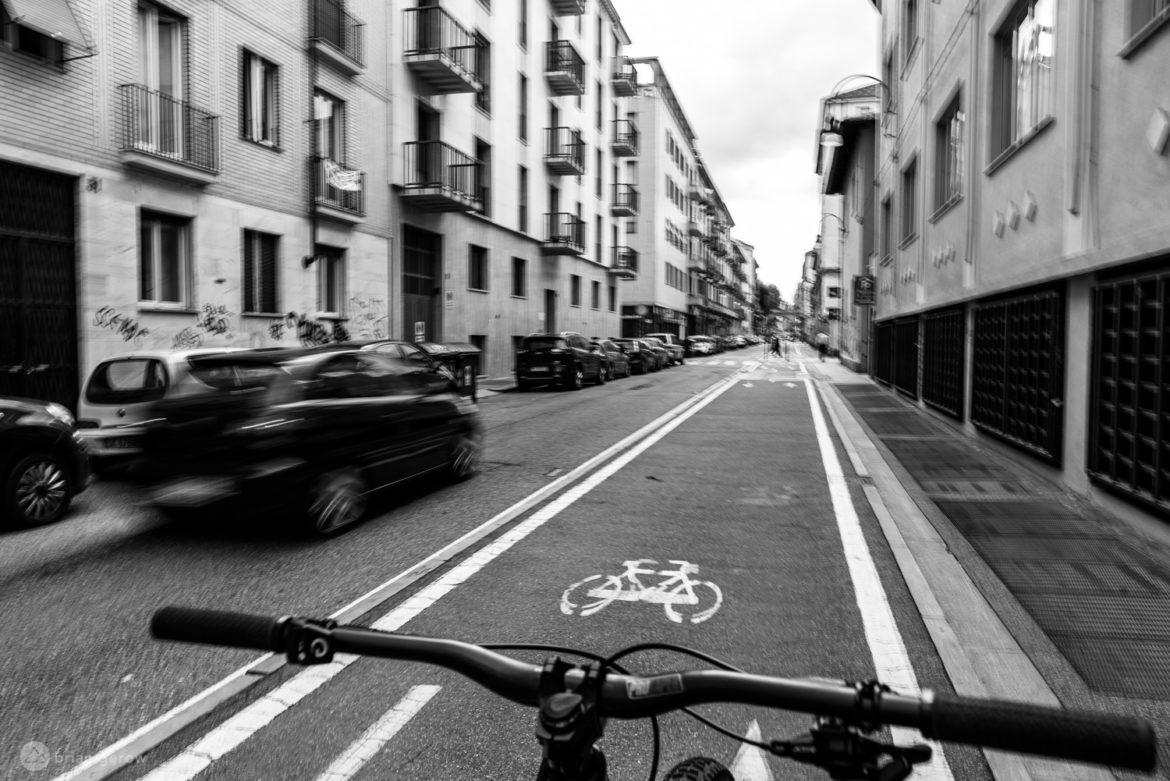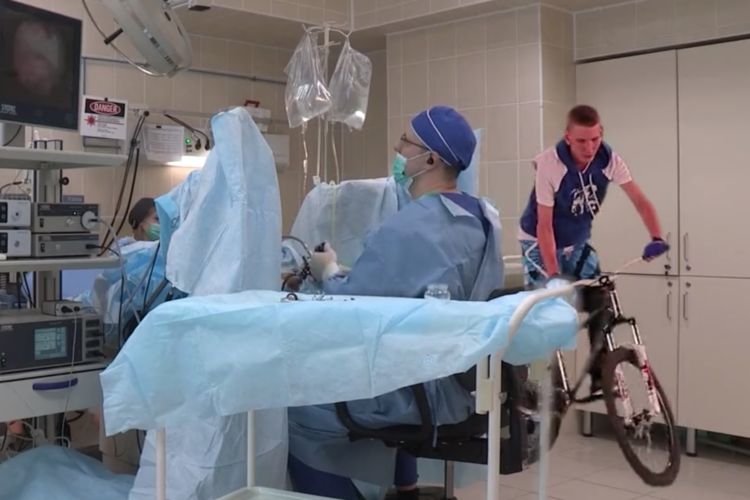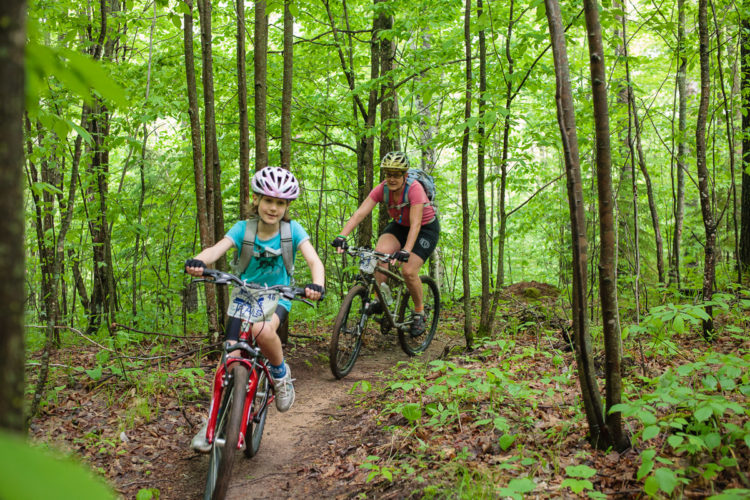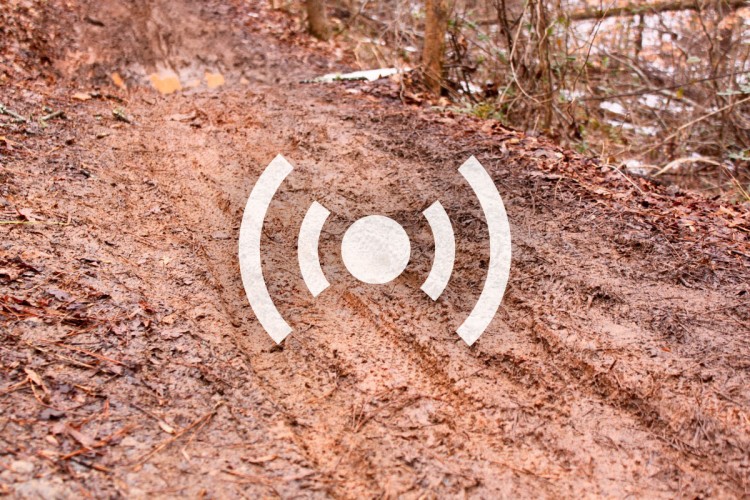
The bicycle was originally intended to be a “vehicle for human transportation,” and for millions of people around the globe, it remains precisely that. With gyms and group activities on an indefinite pause, kids at home growing restless, and fewer people wasting time driving to the office, there’s a growing number of people rekindling their love of balancing on two wheels. Trailheads and bike shops are brimming, and in towns with nearby singletrack, folks are taking to the streets to “ride to the ride.”
Given that some of us are reentering the cycling world, while others are mapping routes to the trails for the first time, we wanted to share some safe commuting tips to help you reach the tracks and get back confidently. Riding to the ride, or bike commuting in general offers a long list of benefits. Some that forest loving mountain bikers might find particularly intriguing include: contributing less pollution, saving money, adding bonus fitness miles, not scrambling for a parking spot, and never sitting in traffic. Sure, you may burn through rear rubber a little quicker, but your fuel savings will handily cover one additional tire per season.
We chatted with some human-powered transportation professionals to collect their go-to resources for commuter safety, and they had some gems to share.

First off, protection is important. If you’re going to the trail you likely have a helmet, which you’ll also want to wear on the way there. Being seen by drivers is key, so maybe leave the goth kit at home and clip a red light on the rear of your shorts. You can remove it once you get to the dirt. Throw a headlight in your bag any time you might be out before or after sunset, or during a darker cloudy day.
One of the main points across all of the transportation safety information is to ride your bike like it was any other vehicle and follow the same local traffic laws. That means, when you’re on the road, ride with traffic, never on the sidewalk, and position yourself where drivers can see you. In most countries, cyclists are allowed roughly a one-meter buffer that all drivers legally need to provide. When there isn’t a bike lane, transportation safety planners recommend taking the whole lane as you would with a car or motorcycle to make your presence more visible. If someone gets frustrated because they want to get around you, that’s far better then them not seeing you in the first place. Taking a little more of the lane will also prevent you from getting hit by a door if anyone steps out of their parked car without first checking the mirror.

To reiterate, riding on the sidewalk is not safer than the street. Transportation systems are designed with specific speeds and directions in mind, and drivers are not looking for someone moving quickly from the sidewalk as they turn into a street. It might be legal to ride on the sidewalk where you live. It’s legal to ride against traffic on a one-way road here in Italy, but that doesn’t mean it’s a good nor safe a idea.
Try to ride with predictable movements so that drivers know when it’s safe to pass. For example, if you weave toward the sidewalk and then back out again to pass parked cars, drivers will not know when you will be out in the lane or not. Similarly, you’ll want to learn a few hand signals (not necessarily just that one) to let drivers know where you’re going and when you’re slowing.
In addition to all of this focus on where to put yourself on the road, many cities have ample off-road commuting options where you can avoid traffic and generally ride more safely. A little internet hunting through the nearby public bike lanes, cycle tracks, greenways, bike boulevards, and scrappy trails might keep you away from distracted drivers more often than not. We can’t all live in Amsterdam, with its bicycle highways, but there’s a good chance you can create a safe commute through your town.

A mountain bike makes it possible to avoid the road as much as possible on your way to the trail. There’s basically nothing you can’t ride over and through. I’ve found so many hidden off-road spots in my area just from riding to the ride, and I don’t have to worry about traffic.
Jeff Barber
While pedaling to the trail, the safest mindset is to consider yourself invisible. No matter how bright your headlight is or what space you occupy, if you always assume drivers can’t see you then you’ll be able to focus on where they are going and make sure you’re not in their path. For example, if you’re in the bike lane and a car directly in front of you has a blinker on indicating a right turn, assume they can’t see you and will turn into your lane. It can be frustrating how often this “right hook” mistake happens, and it’s better to expect it than let it knock you over. None of us are immune to making mistakes while driving, and it’s helpful to have empathy for folks who “didn’t see you.” As long as you’re thinking “they can’t see me,” you should be able to safely steer your commute to the trail.
Street riding safety resources referenced in this article
Your turn: Please share any street riding safety tips with your mountain bike community so we can all save some fuel and ride to the ride.




















0 Comments